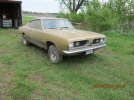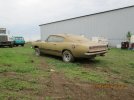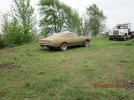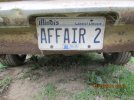Rather poor images taken almost five years ago.




I have the fully rebuilt original 340 engine and four speed transmission in the shop but not reinstalled. The car had almost 341,000 miles on it when I quite driving it almost daily in March, 1996 when my new Dodge truck came in which I still drive daily. Up till that time, only a water pump, alternator, master cylinder, and routine maintenance had been performed for it's operational life.
I have NOS OEM fenders, doors, and DMD reproduction 1/4 panels which are stamped from the original OEM dies to replace the originals some day.
Was dating my wife when the car was given to me and still have both. She is "Affair 1" and wouldn't let me have that number for the plate so had to settle for number two. The shop was called "Auto Affair" so where the name originated. Once kids educations were funded, the shop was closed yet retained.




